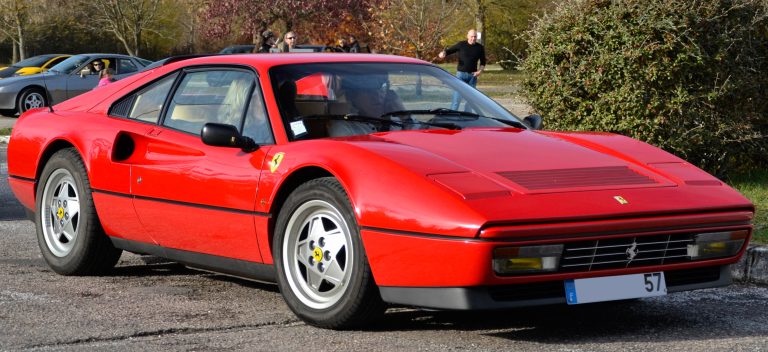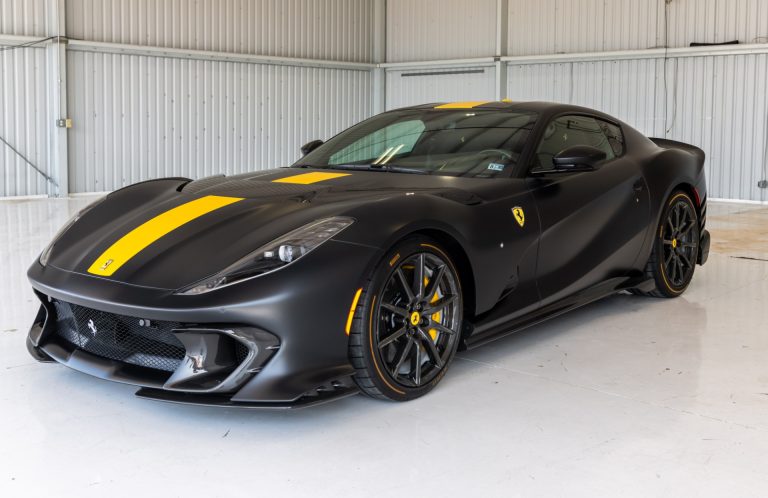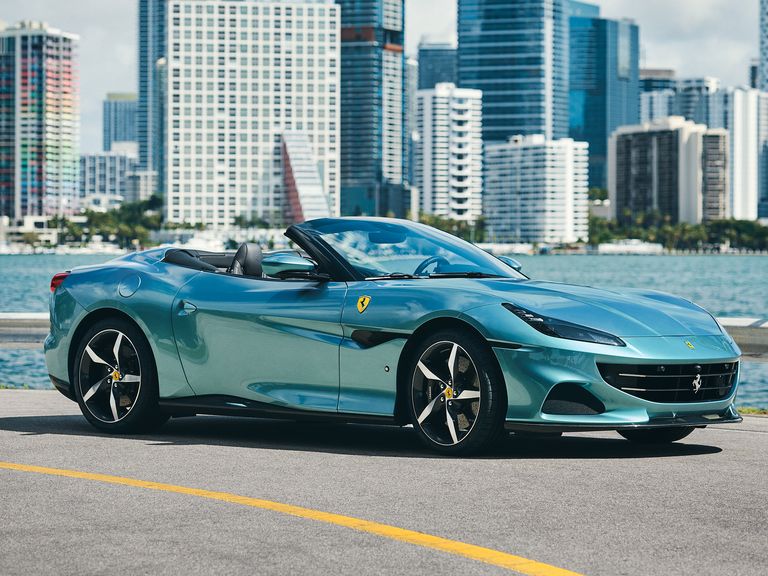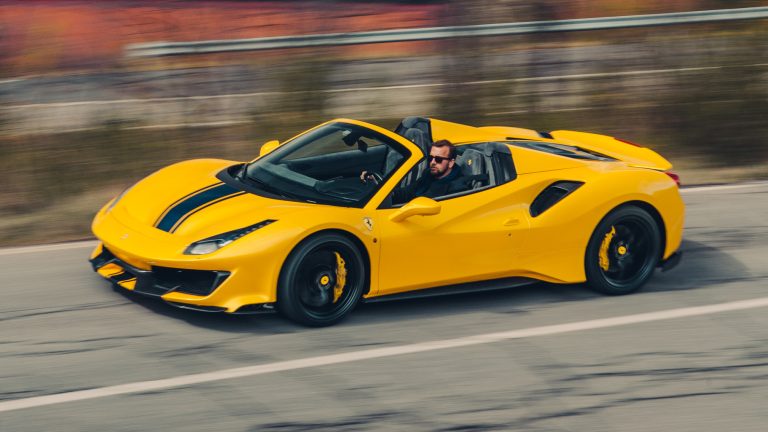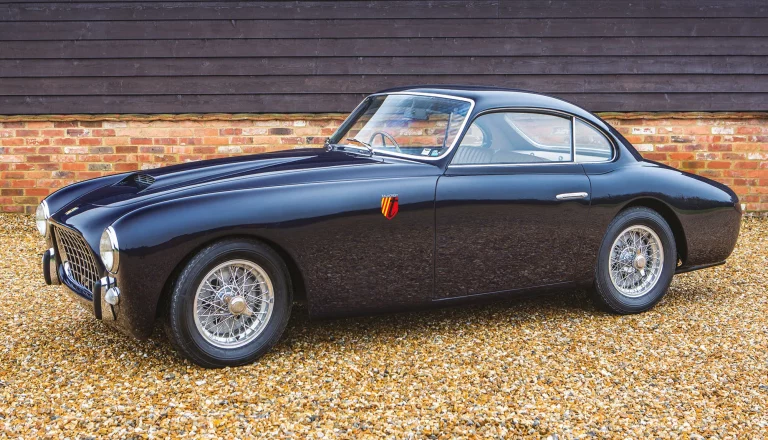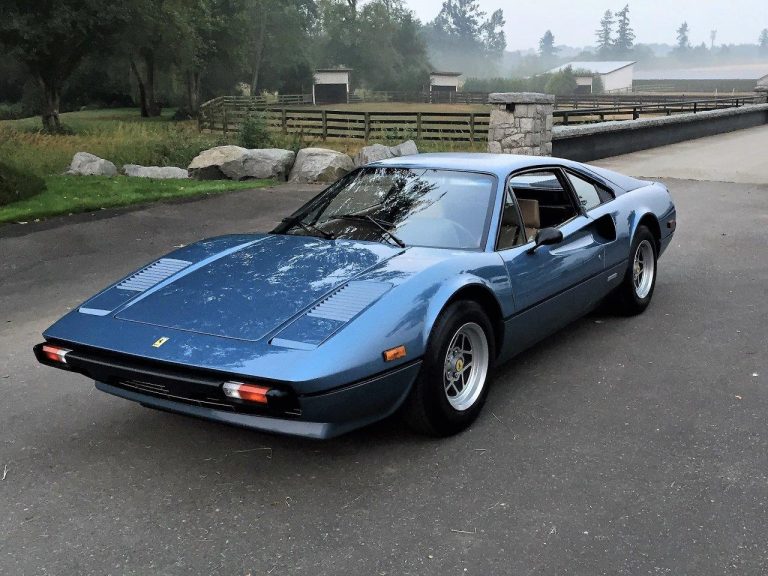Ferrari F40: Engine, HP and Top Speed
Imagine the thrill of sliding behind the wheel of a car designed to race. The Ferrari F40 isn’t just a car, it’s a testament to speed and power, a machine that blurs the line between road vehicle and race car. It’s no surprise that it’s often mistaken for a purebred racer, given its design that requires minimal modifications for competitive racing.
Under the hood, the F40 packs a punch with a 484PS (356kW, 477hp) US-spec engine, mated to a 5-speed manual transmission. It’s not just about raw power though; every aspect of this car, from its stark interior to its lightweight construction, is optimized for performance. So, buckle up as we are going to explore its top speed, engine specs, and horsepower.
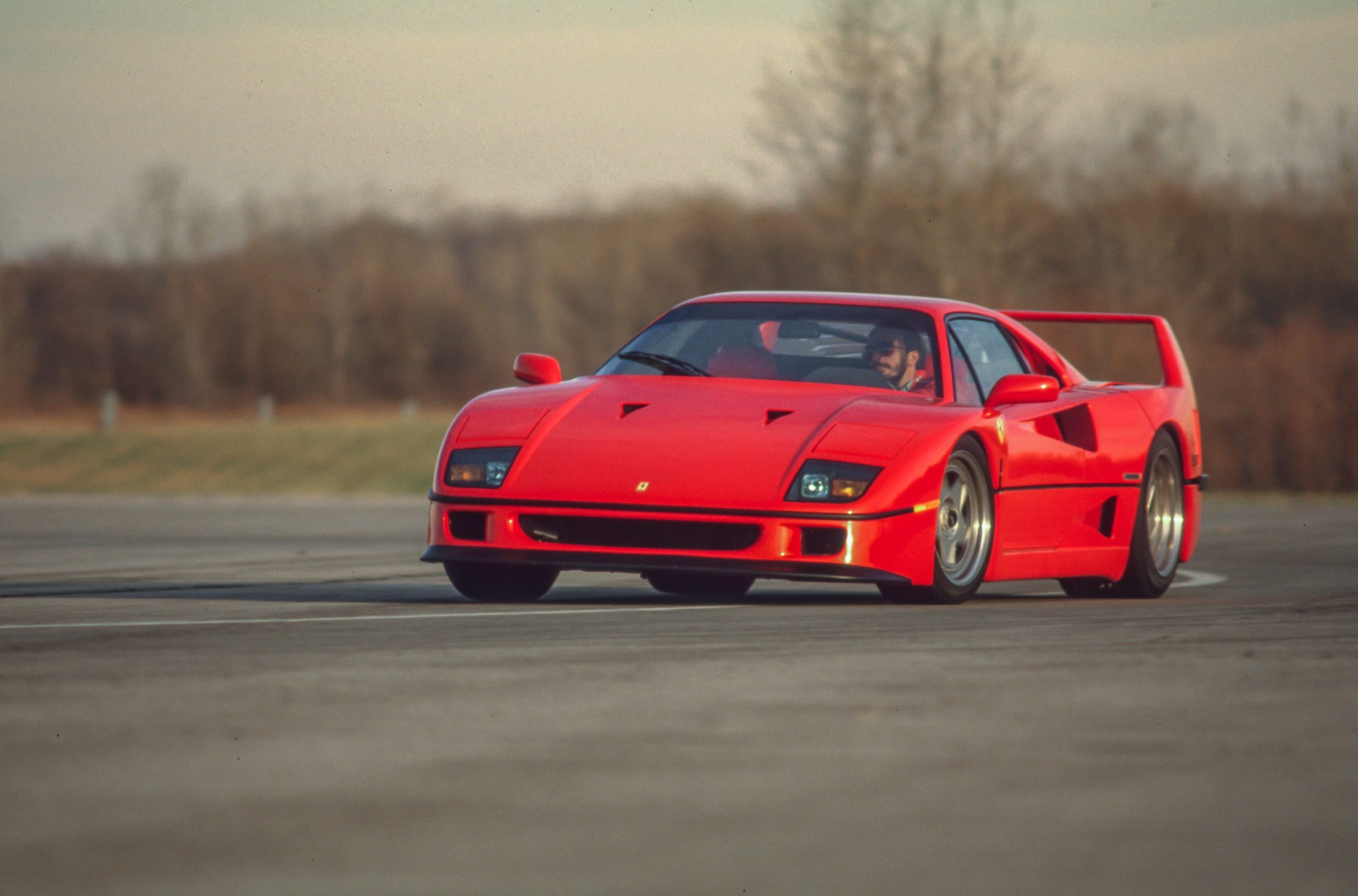
A Complete Ferrari F40 Review
Here we will look into every aspect of the Ferrari F40, from its impressive specifications to its legendary status.
1. Features of Ferrari F40
Design and Construction Details
The Ferrari F40 holds a distinct place among cars, showcasing a fine balance of design elegance and raw power. This marvel of engineering has a primary construction of Carbon fiber. This strategic choice does more than just lend the F40 a sleek aesthetic; it’s part of a larger emphasis on achieving maximum performance while ensuring the vehicle remains as light as possible.
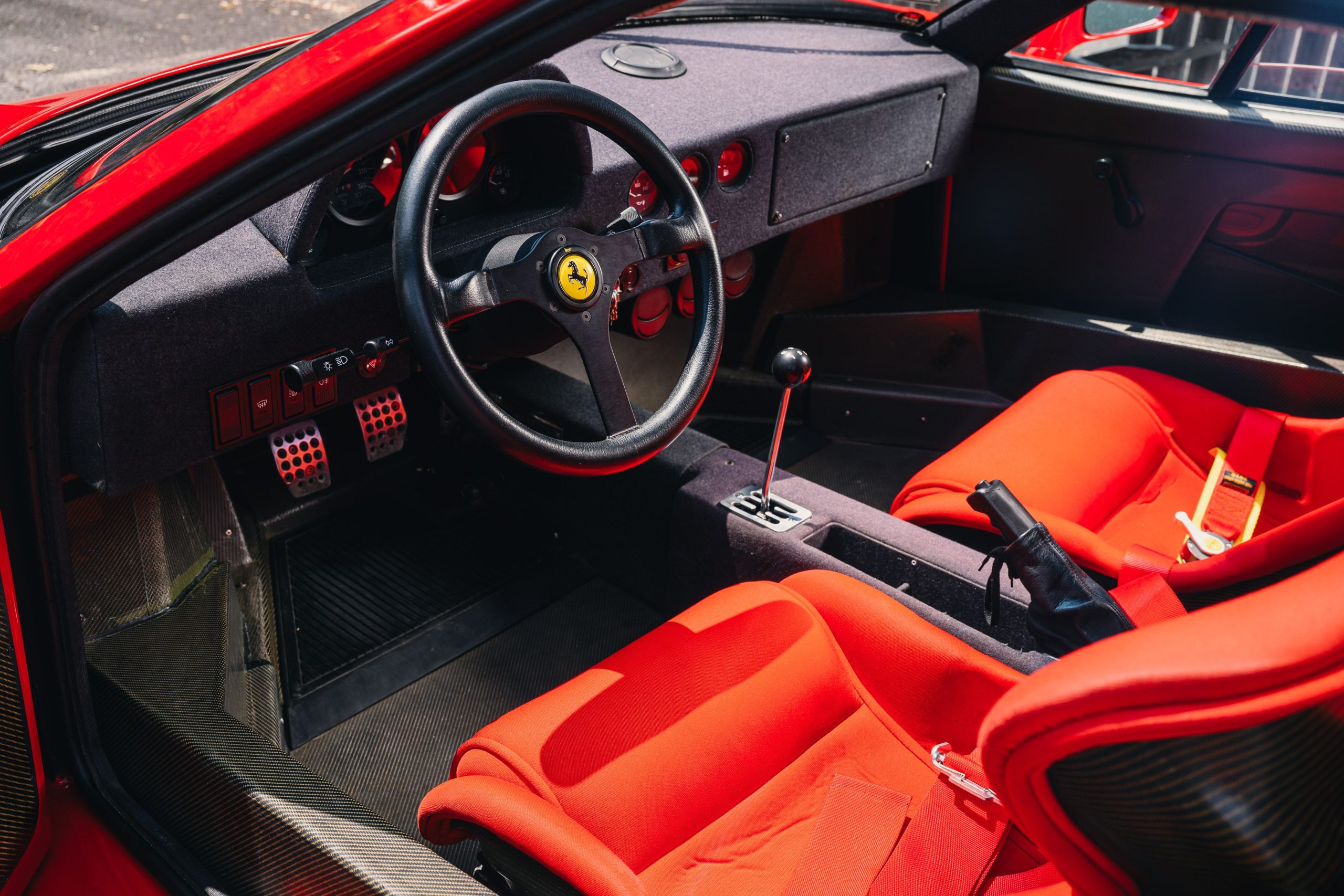
Moreover, the F40 doesn’t shy away from its racing roots. At a glance, you’ll notice its unadorned interior, stark enough to mirror that of an endurance racer’s vehicle. Ferrari could have embellished this space with leather door panels or floor carpeting, but such additions would weigh down the car and dampen its authentic race car ambiance.
Ferrari F40’s Aerodynamic Structure
The design of Ferrari F40 was not just about achieving the maximum horsepower but also involved considerable attention to the car’s aerodynamic attributes. The car is specially designed for achieving the lowest possible drag coefficient. Key aerodynamic features include unique “NASA ducts” incorporated in the body. They were originally developed for airplanes by the National Advisory Committee for Aerodynamics (the precursor to NASA) and designed to take in the maximum amount of air with the minimum amount of drag.
Emphasizing on these aerodynamic enhancements, Ferrari F40 stands apart as a vehicle meticulously engineered to cut through the air with precision. You’ll find proof of this consideration in the F40’s overall dimensions. Its size, combined with a weight of just 2425 lbs and a ground clearance of just 4.92 inches, ensures minimal resistance, straight-line steadiness, and a record-breaking performance that still features prominently in automotive conversations today.
2. Ferrari F40’s Engine Specifications
Let’s get into the real heart of this automotive beast, the engine. The details behind its specifications reveal the true magnitude of the F40’s performance capabilities.
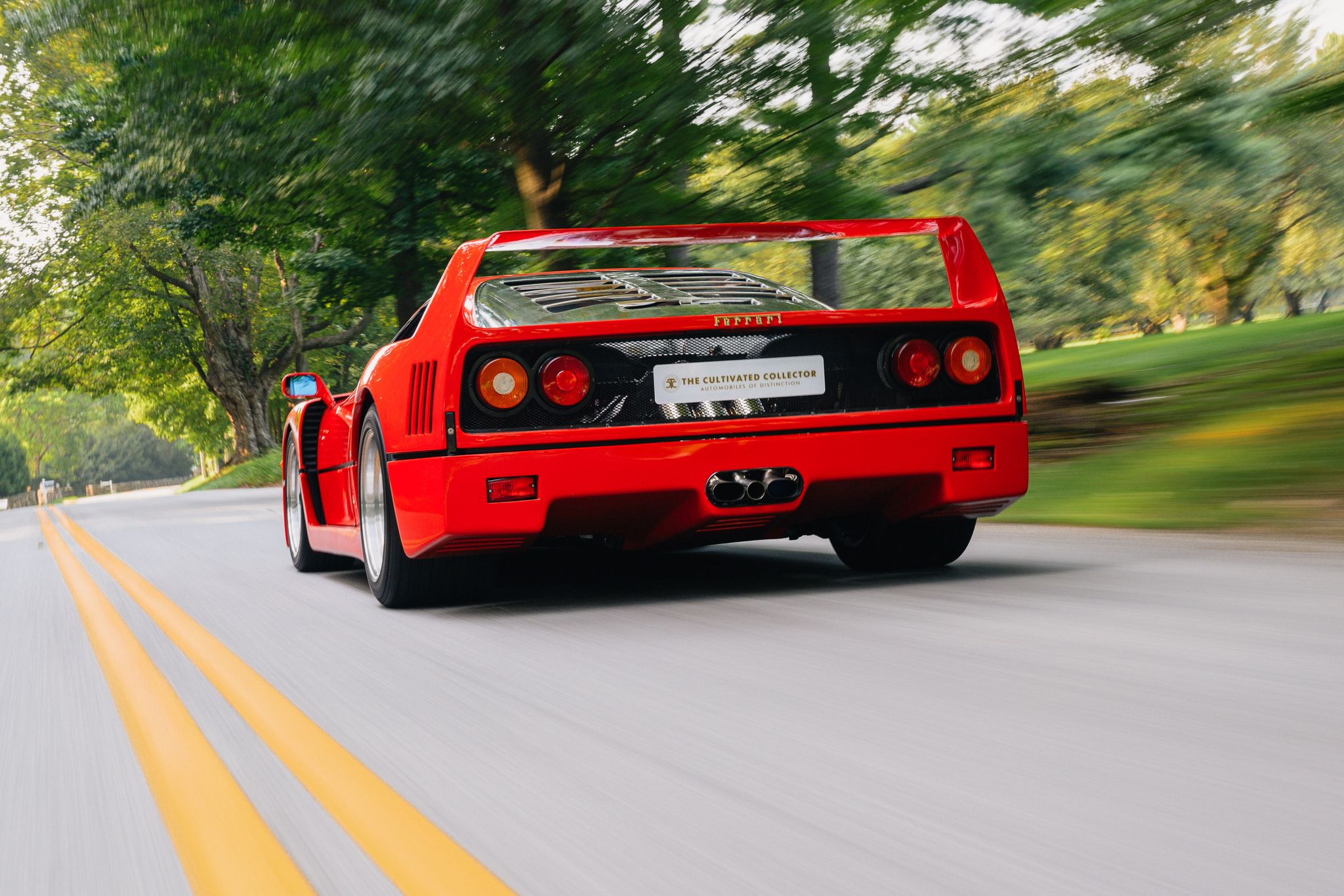
Ferrari F40’s Power and Torque
The F40 boasts a twin-turbocharged V8 engine, specifically a 2.9-liter, delivering an impressive output with 484PS, equivalent to a power staggering 356kW or 477 horsepower, depending on your preferred unit of measure. But what does this imply? Simply, it refers to how quickly a car can accomplish work. More horsepower means the F40 can achieve higher speeds faster, epitomizing the high-performance experience.
Just as crucial to its performance is the engine’s maximum torque. At 4500 rpm, the F40 generates impressive twist – Nm 576 and Nm 486 at full load, translating into rapid acceleration and superb pulling power. Torque manifest as the force that helps the car start moving, maintaining its speed uphill and delivering that exhilarating launch when you press the accelerator.
Ferrari F40’s Horsepower
Concerning the F40’s horsepower, it’s worth going into a little more detail. With 477 hp US spec, the F40 wasn’t designed to be just another fast car but aimed to be an unmatched road-legal race car. The brainchild of Enzo Ferrari, this machine was an undeniable reflection of Ferrari’s race-focused heritage.
To put this into a clearer context, let us consider the F40’s acceleration statistics. It clocks 0-60mph in just 3.7 seconds, and before you’ve had a chance to catch your breath, it’ll hit 150mph in a mere 19.9 seconds. That’s quicker than many high-end sports cars of the time and even some today.
3. Performance of Ferrari F40
As you venture further into the performance intricacies of the Ferrari F40, you discover the real heart and soul of this beast— its unmatched speed and meticulous design.
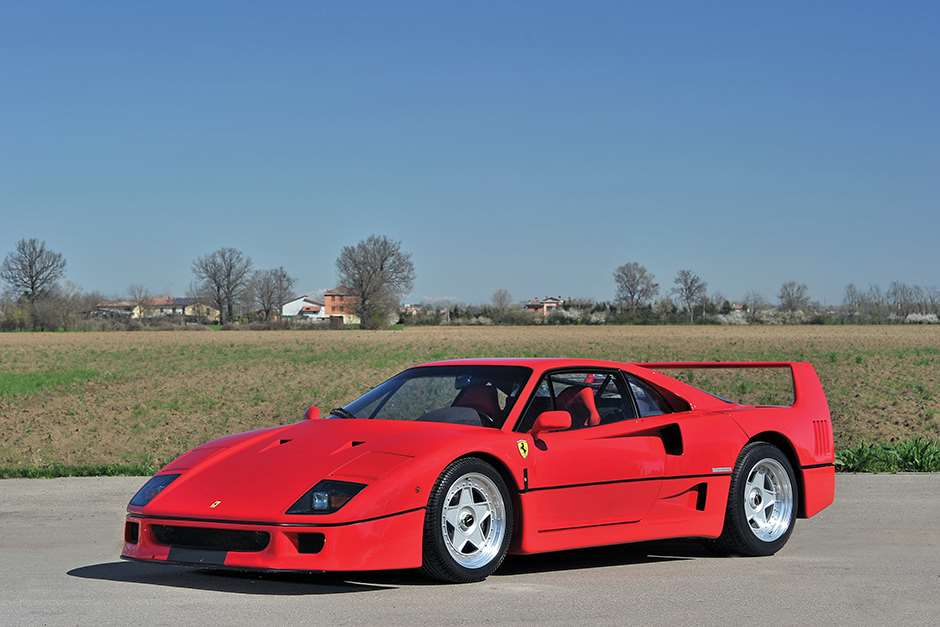
Ferrari F40’s Top Speed
Imagine gripping the wheel of a car that has the potential to reach a top speed of 201 mph. That’s right, you’re in control of a power-packed machine capable of achieving a top speed that would make most other supercars look like toys. The F40 attains this impressive speed owing to its expertly engineered and carefully tuned 477 horsepower engine. This blazing speed combined with an aerodynamically efficient design allows the F40 to stand as one of the fastest supercars of its generation.
Impact of Aerodynamics on Performance
The impressive performance of the Ferrari F40 doesn’t just stop at its engine. The quality of the ride you experience in the F40, is, in a significant part attributable to its superior aerodynamics. Simply put, the lower the air resistance, the faster your F40 can glide over the roads. Every external feature of the F40, from its carbon-fiber body shell to the strategically designed air vents, contributes towards reducing drag and improving downforce. As a result, the F40’s aerodynamically streamlined drives offer an exhilarating high-speed experience.
Ferrari F40’s Suspension System
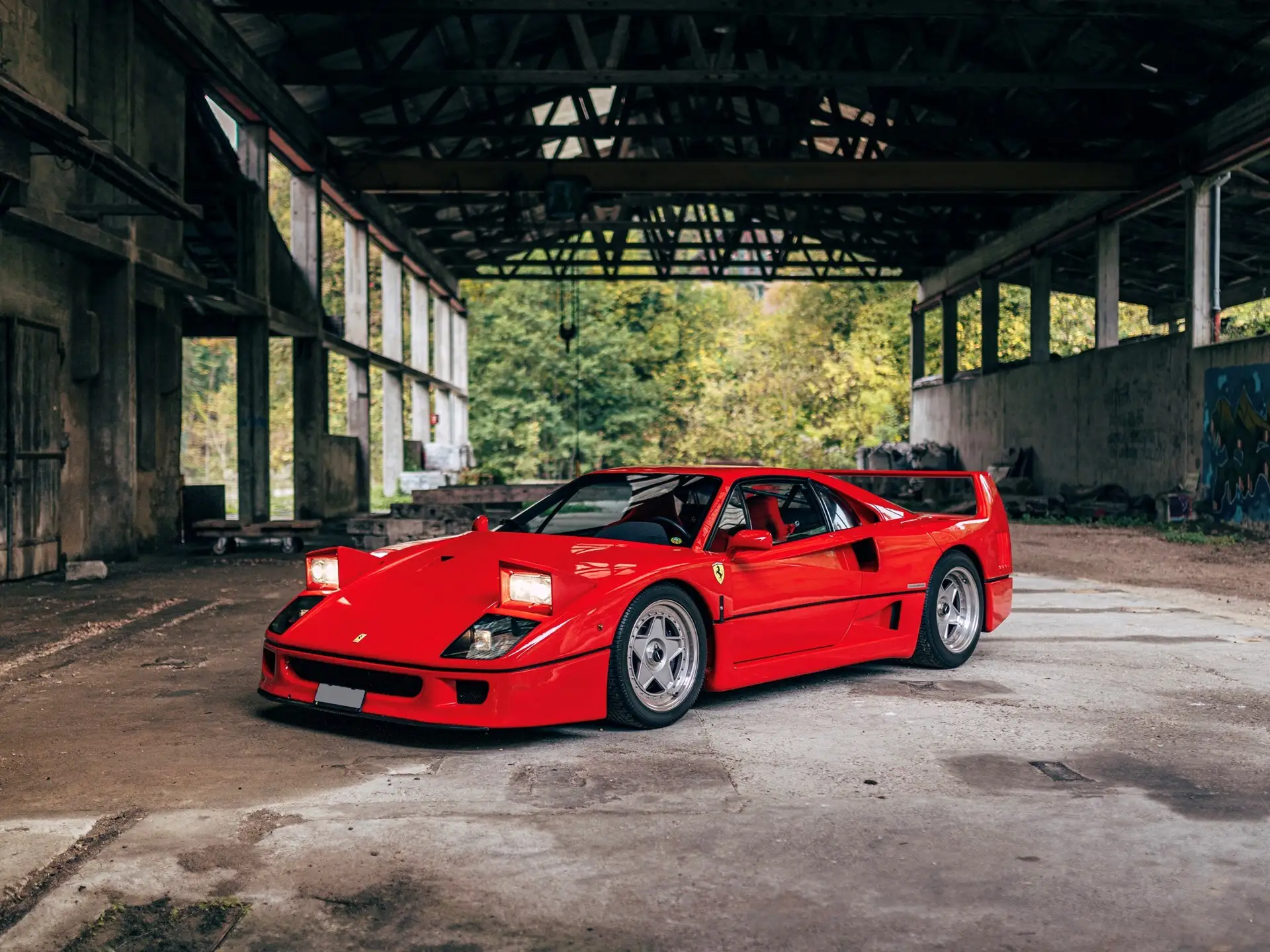
Speaking of the ride quality, the Ferrari F40’s suspension system deserves a special mention. This automotive masterpiece sports a racing-derived double-wishbone suspension setup, something not common in mere road cars. From absorbing bumps to maintaining the tires’ contact with the road, the F40’s suspensions are designed to keep performance as the prime objective. This effective suspension system ensures a controlled and balanced ride even when pushing the vehicle to its limits.
4. Ferrari F40 Price
The price of a Ferrari F40 depends on a few factors, but here’s a breakdown:
- Original MSRP (1987): $399,150 [This was a record-breaking price at the time].
- Current Average Price: $1.5 million, with some well-maintained examples reaching $1.9 million or even higher.
- Recent Sales (2020-2023): Prices ranged from $700,000 to $1 million, but have recently climbed above $1 million again.
- Highest Recorded Sale: $3,965,000 for a 1990 model in 2022.
So, if you’re looking to buy a Ferrari F40, be prepared to shell out a hefty sum. It’s a truly collectible car with a rich history, and the price reflects that.
5. Ferrari F40 Technical specifications
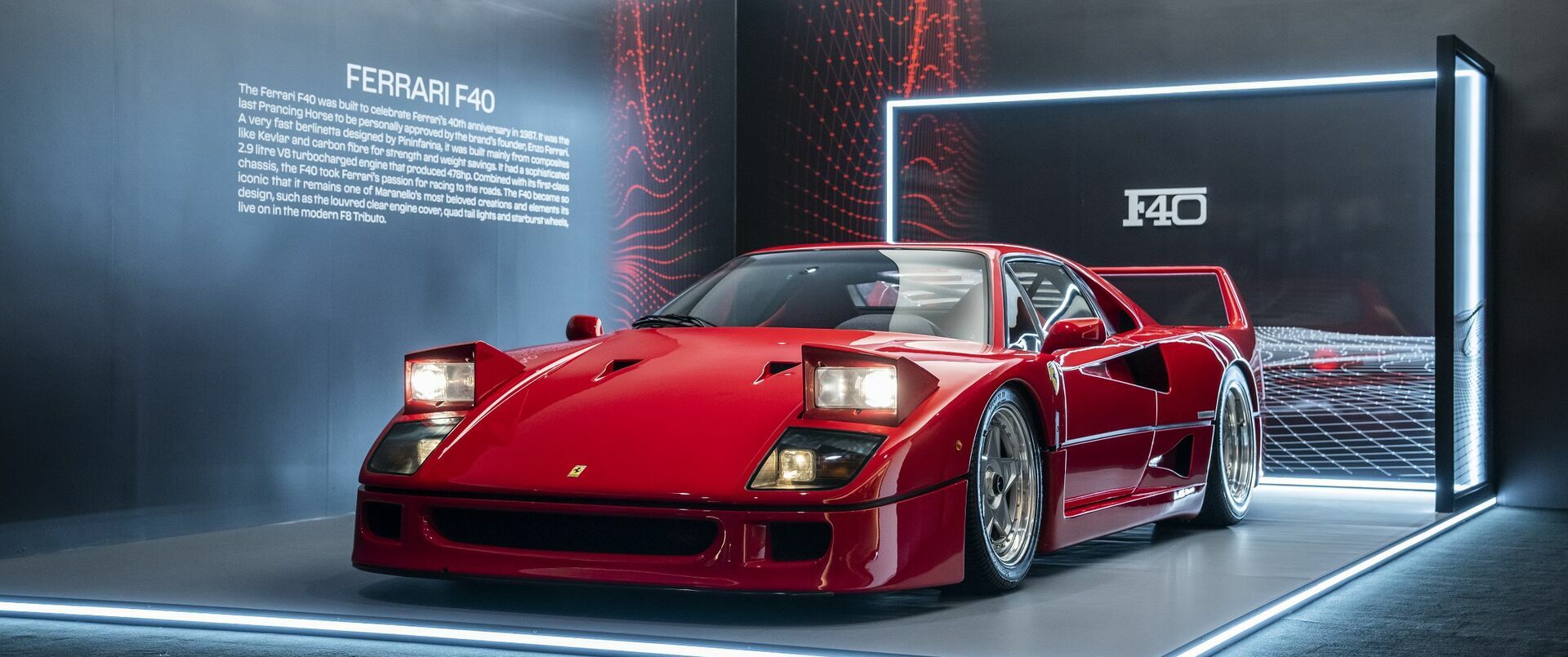
- Engine Type: 2.9-liter, twin-turbocharged V8
- Configuration: Mid-engine, rear-wheel drive
- Displacement: 2936 cc
- Horsepower: 471 hp at 7,000 rpm
- Torque: 426 lb-ft at 4,000 rpm
- Turbochargers: Two IHI turbochargers with intercoolers
- Fuel Delivery: Weber-Marelli electronic fuel injection
- Gearbox: Five-speed manual
- Top Speed: Approximately 201 mph (324 km/h)
- Acceleration: 0-60 mph in about 4.1 seconds
- Length: 4,358 mm (171.6 in)
- Width: 1,970 mm (77.6 in)
- Height: 1,124 mm (44.3 in)
- Wheelbase: 2,450 mm (96.5 in)
- Dry Weight: Approximately 1,100 kg (2,425 lbs)
- Wheels: 17-inch center-lock, five-spoke alloy wheels
- Tires: Front 245/40 ZR17 and rear 335/35 ZR17
Frequently Asked Questions
How much horsepower does a Ferrari F40 have?
The Ferrari F40 is equipped with a twin-turbocharged 2.9-liter V8 engine that generates around 478 horsepower. This powerful engine enables the car to achieve top speeds exceeding 200 miles per hour and go from 0 to 60 mph in approximately 3.8 seconds.
How does the Ferrari F40’s power compare to other cars?
Compared to many cars of its time and even today, the F40 packs a serious punch. As the first production car to achieve a top speed of 200 mph, its 2.9L twin-turbo V8 engine produces an impressive 471 hp and 426 lb-ft of torque.
Was the Ferrari F40 turbocharged?
Yes, the Ferrari F40 was indeed turbocharged. It drew its power from a high-performance 2.9L twin-turbo V8 engine. The turbocharging contributed significantly to the car’s high horsepower output and speed.
What is the difference between the Ferrari F40 and the F50 engine?
While both engines deliver impressive performances, the F50 produces more power than the F40. The F50 is equipped with a 6-speed manual transmission and generates 520hp at 8000rpm, while the F40 delivers 478hp at 7000rpm with its 2.9L twin-turbo V8 engine.
How rare is a V12 engine?
V12 engines are quite rare, especially in the United States where mass production of these engines stopped in the 1940s. Nowadays, manufacturers typically lean towards using large-displacement V8 engines instead.

Hi! I’m Larry Gibbs, studying mechanical engineering with a focus on cars. I really love Ferraris and write blog posts about the latest car stuff. When not studying or blogging, I’m usually on a road trip exploring new places. I also enjoy playing football and watching movies. Life’s an adventure, and I’m all about enjoying the ride!

